
Filter News
Area of Research
- Advanced Manufacturing (7)
- Biological Systems (5)
- Biology and Environment (7)
- Biology and Soft Matter (1)
- Building Technologies (2)
- Chemical and Engineering Materials (2)
- Chemistry and Physics at Interfaces (6)
- Clean Energy (82)
- Climate and Environmental Systems (1)
- Computational Chemistry (1)
- Data (1)
- Energy Frontier Research Centers (7)
- Fossil Energy (1)
- Functional Materials for Energy (6)
- Fusion Energy (1)
- Geographic Information Science and Technology (2)
- Isotope Development and Production (2)
- Materials (60)
- Materials Synthesis from Atoms to Systems (5)
- Materials Under Extremes (6)
- Neutron Data Analysis and Visualization (2)
- Neutron Science (27)
- Nuclear Science and Technology (12)
- Quantum Condensed Matter (2)
- Reactor Technology (1)
- Sensors and Controls (1)
- Supercomputing (37)
- Transportation Systems (3)
News Type
Date
News Topics
- 3-D Printing/Advanced Manufacturing (2)
- Artificial Intelligence (1)
- Big Data (2)
- Bioenergy (2)
- Biology (1)
- Composites (1)
- Computer Science (6)
- Critical Materials (1)
- Cybersecurity (2)
- Energy Storage (1)
- Environment (4)
- Exascale Computing (1)
- Fusion (2)
- Materials Science (4)
- Mercury (1)
- Microscopy (1)
- Neutron Science (2)
- Nuclear Energy (3)
- Physics (2)
- Space Exploration (2)
- Transportation (2)
Media Contacts

Interdisciplinary work has been a hallmark of Julie Mitchell’s career, and it is a strength she expects to leverage in helping solve some big science challenges as she steps into the role of Deputy Director of the Biosciences Division at Oak Ridge National Laboratory (ORNL). Mitchell will support...
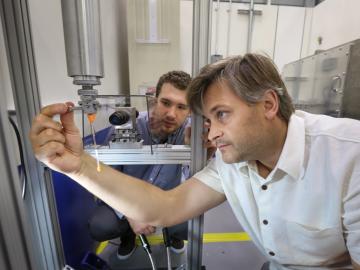

The same fusion reactions that power the sun also occur inside a tokamak, a device that uses magnetic fields to confine and control plasmas of 100-plus million degrees. Under extreme temperatures and pressure, hydrogen atoms can fuse together, creating new helium atoms and simulta...
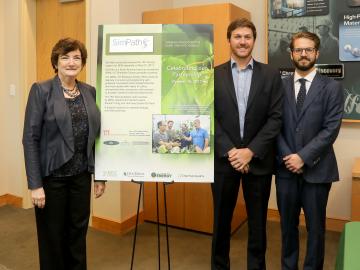
SimPath has licensed a novel cloning system developed by the Department of Energy’s Oak Ridge National Laboratory that generates and assembles the biological building blocks necessary to synthetically bioengineer new medicines and fuels. Knoxville, Tennessee-based ...
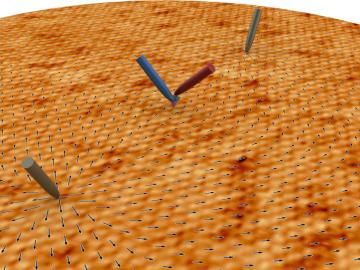
New method to detect spin current in quantum materials unlocks potential for alternative electronics
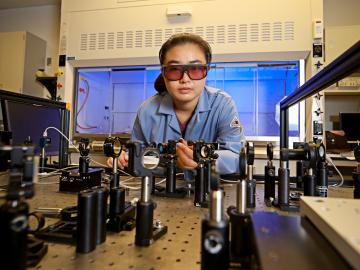
In Chengyun Hua’s research, everything revolves around heat and how it moves. As a Russell Fellow at the Department of Energy's Oak Ridge National Laboratory, Hua carefully analyzes nanoscale heat transfer mechanisms using laser spectroscopy. “Heat is being generated from every...
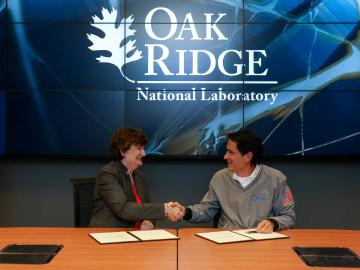
Ohio-based Strangpresse has exclusively licensed additive manufacturing-related extruder technology from the Department of Energy’s Oak Ridge National Laboratory that can quickly print hundreds of pounds of polymer material.
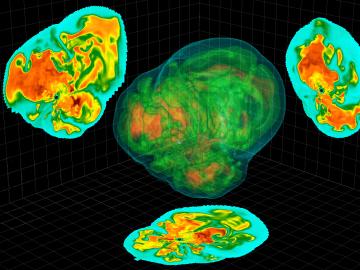
The Big Bang began the formation and organization of the matter that makes up ourselves and our world. Nearly 14 billion years later, nuclear physicists at the Department of Energy’s Oak Ridge National Laboratory (ORNL) and their partners are using America’s most powerful supercomp...

A new Oak Ridge National Laboratory-developed method promises to protect connected and autonomous vehicles from possible network intrusion. Researchers built a prototype plug-in device designed to alert drivers of vehicle cyberattacks. The prototype is coded to learn regular timing...


